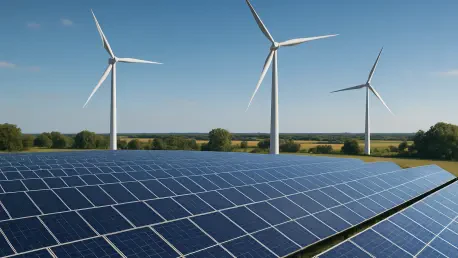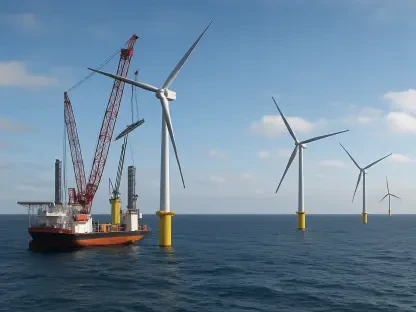Listen to the Article
The misconception of “free” or disposable renewable energy has emerged as a critical challenge in modern energy management. Utilities once assumed that surplus generation from wind and solar sources was sufficiently low-cost to make storage optimization unnecessary. Current market dynamics, however, have rendered that era officially over.
An explosive, non-negotiable surge in electricity demand is here. Driven by the voracious energy needs of artificial intelligence data centers and the broader electrification of transport and industry, this demand shock is fundamentally rewriting grid economics. Wasting power is no longer a rounding error; it’s an unaffordable luxury. This new reality demands a ruthless focus on long-duration energy storage, where round-trip efficiency is the single most critical metric for economic survival and grid stability.
The Coming Demand Shockwave
The scale of new demand is staggering. Forecasts anticipate that data centers alone will increase their power consumption by 165% by 2030, accounting for 50 GW of the 100 GW of predicted new peak demand in the United States. This growth, combined with the electrification of vehicle fleets and industrial processes, is eliminating any notion of surplus electricity.
This shift alters the valuation of long-duration energy storage. It is no longer a tool for simply soaking up excess generation. It is a critical infrastructure asset needed to ensure reliability and affordability. The U.S. Department of Energy estimates that up to 460 GW of high-capacity energy storage may be necessary by 2050 to maintain a stable, decarbonized grid. At that scale, inefficiency is not just a technical flaw. It is a catastrophic economic liability.
Scale Redefines the Efficiency Equation
What efficiency skeptics miss is that scale changes everything. Losing 50% of the electricity from a small home battery is an inconvenience. A 50% loss at the grid scale indicates a significant system failure, equivalent to gigawatt-hours of stored power. The difference is like comparing a leaking glass of water to a leaking Hoover Dam. The sheer volume amplifies the impact of the loss exponentially.
This problem is compounded by the fact that the U.S. power system already wastes over 60% of primary energy during the conversion from fuel to electricity. Many emerging long-duration energy storage technologies struggle to exceed 60% round-trip efficiency, creating a cycle of compounding power losses precisely when the grid needs maximum efficiency. Every percentage point of lost efficiency translates directly into massive, unnecessary infrastructure costs and a greater environmental footprint.
The Financial Case for High-Efficiency Storage
Low round-trip efficiency creates two cascading financial problems: lost revenue from the wasted electricity itself and the enormous capital cost of overbuilding renewable infrastructure to compensate for the losses. As long-duration power banks become more widespread, competition for charging from the grid will intensify, effectively erasing the concept of “free” off-peak energy. Every megawatt-hour will have a price.
The financial penalty for inefficiency is severe. Recent modeling by Energy and Environmental Economics for the California grid suggests that deploying long-duration storage systems with 75% energy retention could save billions in avoided renewable overbuild compared to lower-efficiency technologies. The contrast is equally striking in Texas, where studies suggest a 5-MW, 12-hour battery with high retention can achieve an internal rate of return of nearly 69% and recoup its investment in just 1.5 years. On the other hand, a system retaining only 40% of stored electricity sees that return drop sharply to 37%.
Overbuilding is not a solution. Constructing excess solar farms and wind turbines to feed inefficient storage systems is economically and environmentally untenable. It multiplies the costs of land acquisition, permitting, transmission lines, and long-term maintenance, undermining the very purpose of a decarbonized grid.
A Critical Look at LDES Technology Choices
Not all long-duration energy storage technologies are created equal, and a simplistic focus on duration or initial cost can obscure fatal flaws in efficiency. Decision-makers must analyze the nuanced trade-offs.
Pumped-Storage Hydropower boasts high round-trip efficiency (typically 70-85%) and a long operational life. However, its deployment is severely constrained by geography, long permitting cycles, and significant environmental impact assessments.
Compressed Air Energy Storage offers high efficiency but is dependent on specific geological formations, such as salt caverns. This geographic limitation restricts its scalability as a universal solution.
Flow Batteries offer the advantage of decoupling capacity from power output. However, the amount of power preserved can vary widely depending on the specific chemistry and operational profile. While promising, their lifetime costs must be rigorously evaluated against their actual efficiency in the real world.
An Evaluation Checklist for Grid Leaders
To navigate this new landscape, utilities and developers must move beyond outdated assumptions and adopt a more rigorous evaluation framework. The days of tolerating and investing in low-efficiency grid storage are over.
Prioritize Levelized Cost Over Upfront Capex. Shift procurement models to focus on the total levelized cost of storage (LCOS) over the asset’s lifetime. A system with a lower upfront cost but poor cycle efficiency will almost always be more expensive in the long run. The U.S. Department of Energy estimates that long-duration energy storage must achieve a levelized cost of storage below $0.05/kWh to be cost-effective.
Mandate Efficiency in Requests for Approval. Make a minimum round-trip efficiency of 70% a primary evaluation criterion in all procurement decisions for grid-scale storage. Regulators should include requirements for storing electricity in their planning for resource adequacy and the power grid.
Demand Performance Guarantees. Require technology providers to offer long-term performance guarantees and warranties for the amount of energy saved. It de-risks investments and ensures that projected financial returns align with operational reality.
As extreme weather events strain grid reliability, massive data centers come online, and electrification accelerates, the margin for error is shrinking. The high-capacity energy storage technologies that combine safety, scalability, and high efficiency will dominate the future.
Conclusion
The notion that renewables can simply generate “free” electricity and store it loosely is now an outdated luxury. As electricity demand surges from AI data centers and heavy industry, grid operators and developers must see storage as essential infrastructure, not just a convenience. For utilities, efficiency is crucial to avoid increased infrastructure costs, overbuilt generation, and reliability issues, making round-trip efficiency the key metric. The winners in the next phase of the energy transition will not be defined by the number of megawatts they install, but by how little they waste. In a world where every megawatt-hour must deliver, the myth of “free” power disappears — and in its place rises a grid built on precision and accountability.









